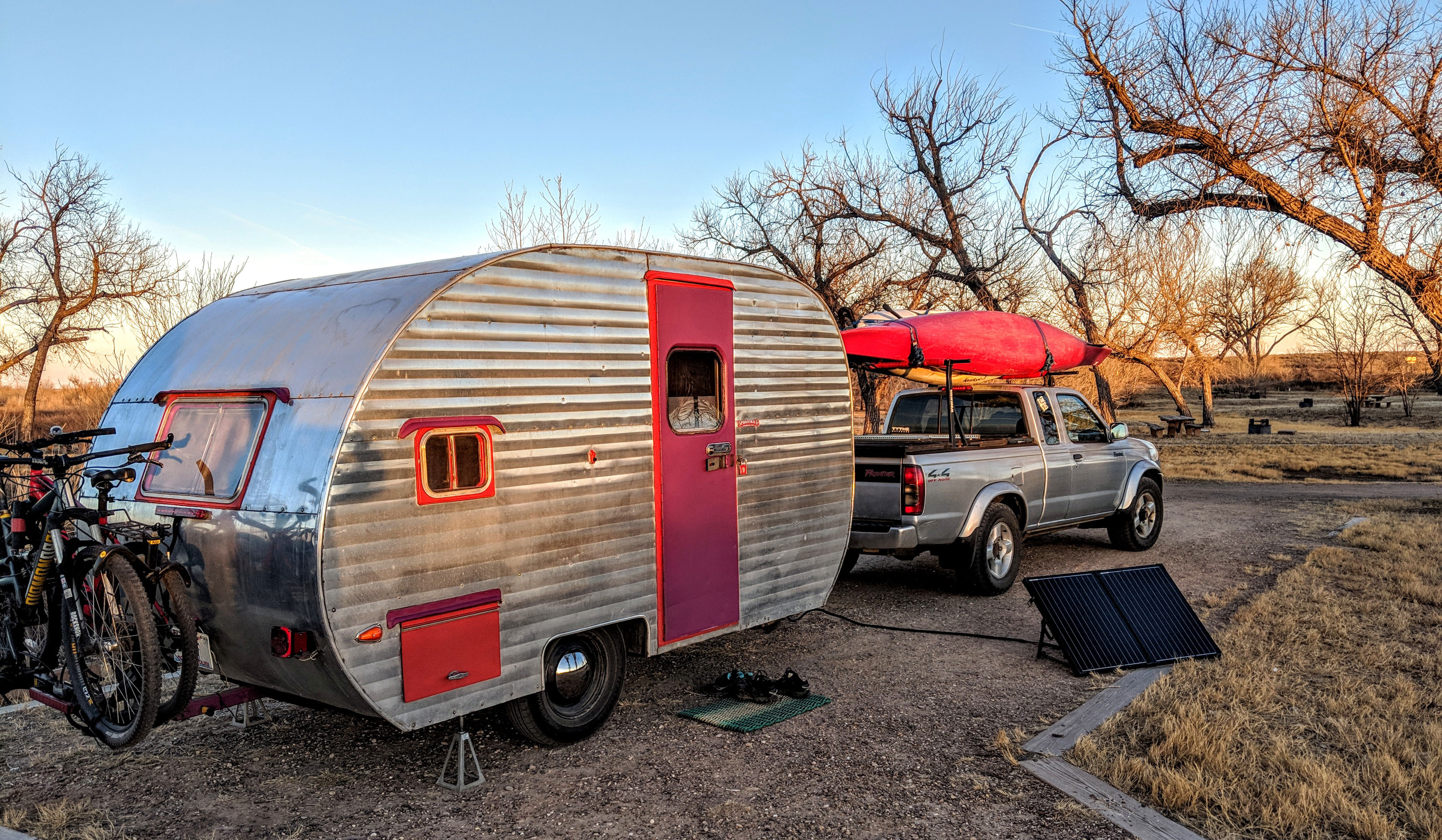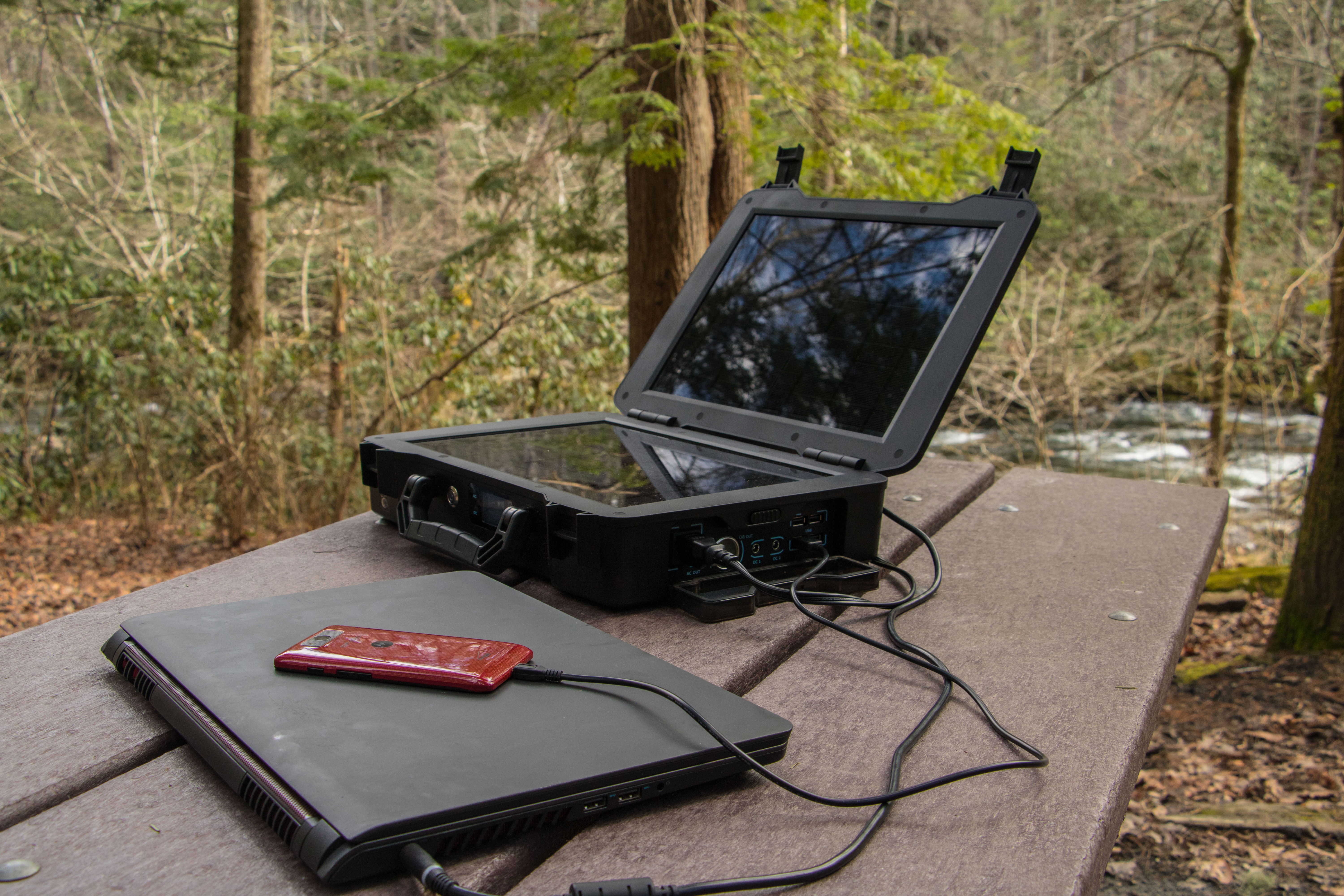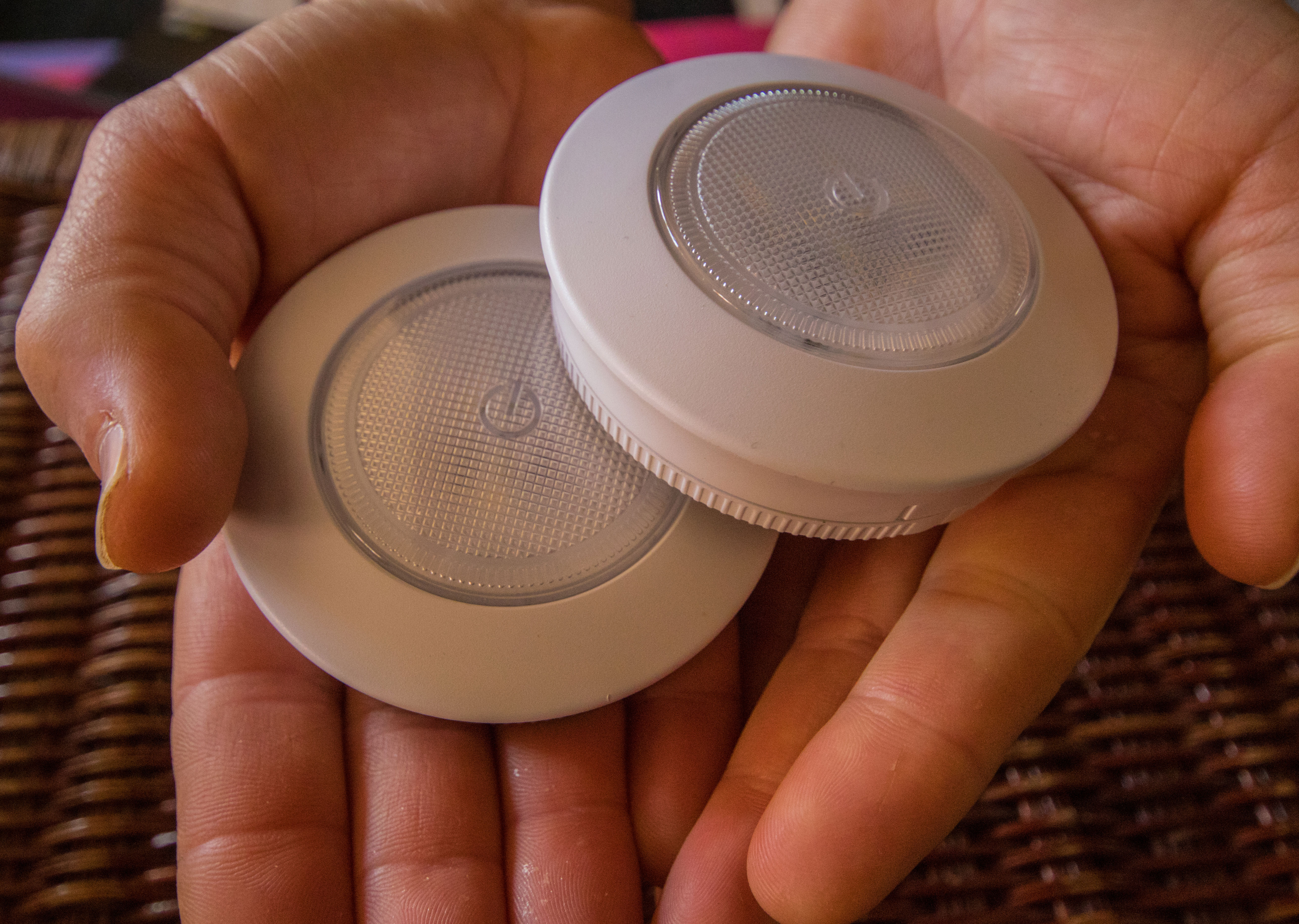Strategies to Maximize the Life of Your Solar System’s Batteries

Two of the more FAQ’s we get about our solar powered system are “What do you do when there isn’t much sunshine?” and “Does your panel charge the battery on cloudy days?” Since weather is fickle, our answer is “It depends.” Ask a fair-skinned person if they’ve ever gotten a sun burn on an overcast day and they’ll tell you it can happen. Thus, solar panels still convert sun energy to electricity even on cloudy days, though their efficiency greatly depends upon on just how cloudy it is. We’re dedicating this article to the strategies we use when living in or traveling through areas with low solar gain. This past fall and winter while passing through the Northeast and Midwest, we not only had the challenge of overcast skies, but increasingly shorter daylight hours.
Conserving Energy Begins with Making Choices
Remember when our parents harangued us about turning off lights whenever we left a room? Energy costs money. So, it’s easy to think of batteries for a solar system as your solar savings account. Earning solar energy obviously only happens during the day, but saving can happen around the clock. The less you spend, the more you keep in the bank. Without good solar gain during the day, running the same number of appliances as usual during the night or even on cloudy days will quickly drain your solar savings account. When you haven’t seen the sun for a few days and the future forecast looks grim (trust us, we’ve been there!), you will need to make some choices to keep from completely draining your batteries.
Regardless of the size of your system, we can all reduce our energy consumption. For us, this is a fun, creative – and a little nerdy – challenge because we are determined to keep it simple. And admittingly, drastic measures for saving, see Plan C, are rarely required.
Start by making a list of all the electrical appliances that you must keep running (lights at night, CPAP machine, refrigerator, cell phone charger, etc.) Then make a list of all the other additional electrical appliances you might like to use. Is there an alternative method to accomplish what you want – one that either uses no electricity or less electricity? See the table below for a few ideas. Keep in mind, this may be only temporary. You can make it through cloudy days without necessarily having to scale up your system, by adding more panels, more batteries, larger inverter, etc.

Plan Ahead: When on the Move
Many RV’s or vans charge the house batteries off the engine’s alternator while driving. Our truck and travel trailer are not set up that way, so our battery only gets charged through our 100-watt solar suitcase. We built a custom bracket on the back of our truck bed cover which keeps it secure, but also easy to remove. When it’s not getting a lot of direct sun while driving, we often stop in a public park or picnic area for lunch. If there is even a bit of sun during the mid-day, we park strategically and/or remove our solar panel from its rack, find the best angle, and capture some rays for a few hours. While we eat lunch or stretch our legs on a brief walk, our panel can charge up the battery to get us through the evening.
When it’s cold, cloudy, or rainy outside, we often spend time writing, visit with friends, or catch up on life’s little details. You’ll often see Hamlet (our adventure rig) parked at a public library, while we spend the afternoon getting some work done and possibly charging up our electronics. This puts less pressure on our battery’s storage capacity while enjoying our nation’s most iconic public buildings and free public services.
Planning Ahead: When Parked
Now that it is March and we’re in the sunny Southwest, we hardly ever think about the charge on our battery. We just plug in, turn on and forget about it. But in the Midwest or Pacific Northwest in November, we are strategic about our charge. First off, we choose a campsite with a southern exposure, if possible. Second, we check our voltage reader in the morning and establish a plan for the day. Third, we choose the optimal location for the solar panel, taking into consideration any trees or structures which might shade it as the angle of the sun changes throughout the day. We pay special attention to this if we plan to leave for the day and enjoy Mother Nature. Sound complicated? It was a bit at the beginning, but now it only takes about 3 minutes of our day,
From the beginning of our solar adventures, we chose with a portable solar suitcase over a permanently installed panel on our roof because we wanted the flexibility of putting our panel, but not necessarily our trailer, in the optimum location. This flexibility especially helps during the summer, when we’d prefer to park the trailer in the shade and have our solar panel in the sun. We can even add an extension cord (up to 25 feet) to reach the best spot.
Plan B – Have a Good Back-up

In addition to our main system, we have two portable solar generators that we use as a back-up for those rare nights when our solar bank account runs out. The Renogy Phoenix Generator is a briefcase-sized, all-in-one, portable system (20-watt solar panel, lithium-ion battery, and inverter) that can be charged via the sun, cigarette lighter outlet in the car, or directly from a standard wall outlet. This amazing little device has many uses and is quite powerful for its size with 210 Watt hours! Additionally, our Solar Power Bank is a hand-held solar generator that easily fits into a coat pocket or backpack. It is perfect to re-charge a smartphone, batteries, tablet, or Kindle. With these additional battery sources charged up and ready to go, we can easily keep the lights on when we are parked for a couple of days in cloudy/rainy weather.
When It’s Time for Plan C

Just a few times over the past 6.5 years, we’ve found ourselves in a place where we haven’t seen the sun for days or weeks at a time – I’m looking at you Diablo, Washington! This is the only time when solar gain becomes a real challenge for our system. If we’ve already employed the strategies above and still don’t have enough in our solar savings account to get us through the evening, we resort to Plan C. We have LED puck lights that run on rechargeable AAA batteries that we’ve installed in strategic locations in Hamlet. These palm-sized “tap on/tap off” lights are incredibly helpful for focused light over the kitchen, dining table, bed, and even in a dark closet. They literally sip at their batteries; and go months without needing a recharge. If we need more light, we also pull out our hand-crank lantern that we picked up in Kenya and add some candles for ambiance. We have all survived short-term power outages; the sun always comes back. If all else fails, we simply drive to the nearest restaurant or movie theater and enjoy a night outside of the camper!
Winter Storage
Batteries have an optimal temperature range and leaving them in place over the winter is a sure way to shorten their lifespan. We learned this the hard way when we spent 6 months in the tropics volunteering and learning Spanish with Hamlet parked at a friend’s place all winter long. Our battery was less than 2 years old and it just wasn’t holding a charge. The best way to store your battery is to bring it inside a basement or garage which won’t go below freezing and keep it on a trickle charger. On our latest 12-volt deep cycle marine battery we’ve gotten over 4 years of use.

Get the Right Equipment for Your Circumstances
When we tell people that we live full-time on 100 watts of solar power, we get nay-sayers or people who tell us that if we added just a couple of panels and batteries, we could watch TV and add a microwave. We certainly know this, but those things are not why we chose this lifestyle. Everyone’s energy needs are going to be different, so don’t let someone talk you into something you don’t need. Keep it simple and go solar in incremental steps. Whatever you choose, you’re going to love the freedom you find in going solar!
We’ve used solar to power 98% of our lives for the past 6.5 years. We keep our energy needs simple because we want to live simply. Our primary solar system consists of one 100-watt Renogy solar panel suitcase, one charge controller, one deep-cycle 12-volt lead acid battery, and one 400-watt inverter. With this system we run lights in the evening, ceiling vent fan, and charge laptops and smartphone. It’s all we really need when we’re not out enjoying the outdoors. If you are just joining us in this series and want to learn more about how solar panels work, we suggest you start with our first two articles: How Solar Panels Work: Breaking it Down for Beginner’s and The Complete Guide to Getting Started with Solar in Mobile Homes: Are Panels Worth It?
Learn more about David and Shari's adventures here!










